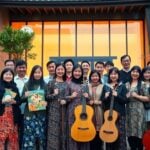The introduction serves as the gateway to any written work, acting as a crucial first impression that can either captivate or alienate the reader. It is not merely a formality; rather, it is an essential component that sets the tone for the entire piece. A well-crafted introduction provides context, outlines the purpose of the work, and establishes a connection with the audience.
In an age where attention spans are fleeting, the introduction must be compelling enough to draw readers in and encourage them to continue exploring the content. It is the moment when the writer has the opportunity to engage the reader’s curiosity and interest, making it imperative to invest time and thought into its construction. Moreover, a strong introduction lays the groundwork for the arguments and ideas that will unfold in the body of the text.
It serves as a roadmap, guiding readers through the complexities of the subject matter while providing them with a clear understanding of what to expect. By articulating the main themes and objectives early on, writers can help their audience navigate through intricate discussions and analyses. This clarity not only enhances comprehension but also fosters a sense of trust between the writer and the reader.
When readers feel informed and oriented from the outset, they are more likely to remain engaged and receptive to the ideas presented throughout the piece.
Key Takeaways
- The introduction sets the tone for the entire project and is crucial for capturing the reader’s attention.
- A compelling opening statement should be concise, engaging, and relevant to the topic at hand.
- Highlighting the significance of your project helps the reader understand its importance and relevance.
- Establishing your credibility and expertise builds trust and confidence in the reader.
- Setting clear objectives and goals helps the reader understand what to expect from the project and what the desired outcomes are.
- Engaging the reader with a strong hook is essential for keeping their attention and drawing them into the rest of the project.
Crafting a Compelling Opening Statement
The Power of a Compelling Opening Statement
The opening statement is a crucial element of an introduction, setting the stage for everything that follows. A well-crafted opening statement should be thought-provoking, intriguing, or even provocative, capturing the reader’s attention immediately. It can take various forms, such as a striking statistic, a poignant quote, or a vivid anecdote that resonates with the audience’s experiences or emotions.
Establishing a Connection with the Reader
The key is to create an immediate connection that compels readers to delve deeper into the text. A well-crafted opening statement not only piques interest but also establishes a thematic foundation that can be built upon in subsequent paragraphs. In addition to grabbing attention, an effective opening statement should also reflect the tone and style of the writing.
Aligning with the Overall Voice and Tone
Whether the piece is formal or informal, academic or conversational, the opening should align with the overall voice of the work. This alignment helps to create a cohesive reading experience, allowing readers to feel comfortable and engaged from the very beginning. Furthermore, a strong opening statement can serve as a springboard for introducing key concepts or questions that will be explored in greater detail later on.
Creating Anticipation and Curiosity
By laying this groundwork early in the introduction, writers can create anticipation and curiosity, encouraging readers to continue their journey through the text.
Highlighting the Significance of Your Project

Once the reader’s attention has been captured, it is essential to articulate why the project at hand is significant. This involves clearly outlining its relevance within a broader context, whether that be societal, academic, or personal. By emphasizing the importance of the project, writers can help readers understand not only what is being discussed but also why it matters.
This significance can be conveyed through various means, such as discussing current trends, addressing pressing issues, or highlighting gaps in existing research. By situating the project within a larger framework, writers can effectively communicate its value and urgency. Additionally, highlighting significance involves connecting with readers on an emotional level.
It is not enough to simply state facts or figures; writers must also convey passion and conviction about their subject matter. This emotional resonance can inspire readers to care about the topic and invest their time and energy into understanding it more deeply. By sharing personal anecdotes or experiences related to the project, writers can create a sense of intimacy and relatability that draws readers in further.
Ultimately, when readers grasp the significance of a project, they are more likely to engage with it thoughtfully and critically.
Establishing Your Credibility and Expertise
In any written work, establishing credibility is paramount. Readers are more inclined to trust and engage with content when they perceive the author as knowledgeable and authoritative on the subject matter. This can be achieved through various strategies, such as citing relevant qualifications, experiences, or research that bolster one’s expertise.
By providing evidence of their background and understanding of the topic, writers can instill confidence in their audience and encourage them to take the content seriously. This credibility not only enhances the overall quality of the writing but also fosters a sense of respect between writer and reader. Moreover, establishing credibility goes beyond mere qualifications; it also involves demonstrating a genuine commitment to accuracy and integrity in presenting information.
Writers should strive to provide well-researched content that reflects a balanced perspective on the topic at hand. This may involve acknowledging differing viewpoints or addressing potential counterarguments within the introduction itself. By doing so, writers can showcase their critical thinking skills and willingness to engage with complex issues thoughtfully.
When readers perceive an author as credible and trustworthy, they are more likely to remain engaged throughout the piece and consider its arguments seriously.
Setting Clear Objectives and Goals
A well-defined set of objectives and goals is essential for guiding both the writer’s process and the reader’s understanding of what to expect from the work. In this section of the introduction, writers should articulate their intentions clearly, outlining what they hope to achieve through their writing. This may involve stating specific questions they aim to answer or problems they seek to address within their project.
By providing this clarity upfront, writers can help readers navigate their expectations and understand how each section of the text contributes to these overarching goals. Furthermore, setting clear objectives allows for a more focused exploration of ideas throughout the body of the work. When writers have a clear sense of direction, they are better equipped to structure their arguments logically and coherently.
This organization not only enhances readability but also reinforces the significance of each point made within the text. Readers appreciate knowing what they are working towards as they progress through an article or essay; it creates a sense of purpose that keeps them engaged and invested in uncovering how each piece fits into the larger puzzle.
Engaging the Reader with a Strong Hook

The Power of a Strong Hook
To truly captivate an audience from the outset, writers must employ a strong hook that resonates with their readers on multiple levels. A hook serves as an enticing invitation into the narrative or argument being presented; it should evoke curiosity while also hinting at deeper themes or questions that will be explored later on. This could take many forms—an unexpected fact that challenges common assumptions, a vivid description that paints a picture in the reader’s mind, or even a rhetorical question that prompts reflection.
Creating an Immediate Connection
The goal is to create an immediate connection that compels readers to want to learn more. In addition to sparking curiosity, an effective hook should also align with the overall tone and message of the piece. It should feel organic rather than forced, seamlessly integrating into the introduction while setting up expectations for what is to come.
Establishing Momentum and Setting the Tone
A well-executed hook not only engages readers but also establishes a rhythm for subsequent paragraphs, creating momentum that carries them through to later sections of the work. Ultimately, when writers succeed in crafting a strong hook, they lay a solid foundation for an engaging reading experience that encourages exploration and reflection on their ideas.
The Art of Crafting an Effective Introduction
In conclusion, crafting an effective introduction is an art form that requires careful consideration of various elements—from establishing significance and credibility to engaging readers with compelling hooks. Each component plays a vital role in shaping how audiences perceive and interact with written content. By investing time in creating thoughtful introductions, writers can enhance their ability to connect with readers while effectively conveying their messages. The introduction is not merely an opening; it is an opportunity for writers to invite readers into their world and inspire them to embark on a journey of discovery through their words.
For those interested in further enhancing their grant application skills, particularly after learning about writing a successful introduction, it might be beneficial to explore specific opportunities where these skills can be applied. One such opportunity is detailed in the article titled “Request for Proposals: Competitive Major Grants – United States.” This article provides insights into the types of projects funded and the detailed requirements for the proposals, which can serve as a practical application of the introductory writing techniques discussed. You can read more about this opportunity and how to apply by visiting Request for Proposals: Competitive Major Grants – United States.
FAQs
What is a grant application?
A grant application is a formal request for financial support from an organization, government agency, or foundation to fund a specific project or program.
What is the purpose of the introduction in a grant application?
The introduction in a grant application serves to provide an overview of the project, establish the need for funding, and capture the attention of the reader.
What should be included in the introduction of a grant application?
The introduction of a grant application should include a brief description of the organization, a statement of the problem or need that the project addresses, and an overview of the proposed project or program.
How can I make the introduction of my grant application stand out?
To make the introduction of your grant application stand out, it is important to clearly articulate the significance of the project, demonstrate a strong understanding of the funding organization’s priorities, and use compelling language to engage the reader.
Are there any common mistakes to avoid in writing the introduction of a grant application?
Common mistakes to avoid in writing the introduction of a grant application include providing too much detail, failing to clearly communicate the project’s relevance, and using generic or uninspiring language.


























